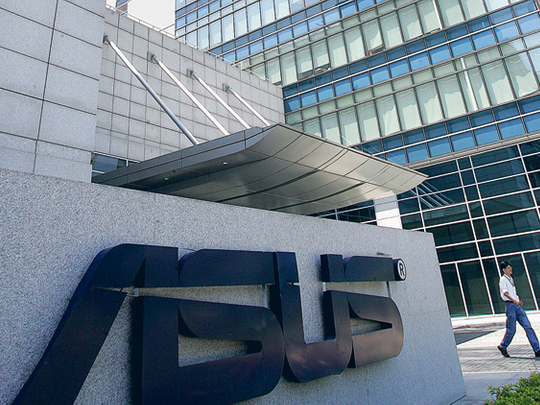
Dubai: AsusTek chairman Jonney Shih thinks enough is enough, at least when it comes to PC (personal computer) processors.
"Every year you look at how computers are evolving," he said, talking about the increase in computing power from the 386 to today's processors. "From an innovation point of view we should be able to do something more."
Shih told Gulf News he first began thinking that back in 2006, and that line of thinking led to the dev-elopment of Asus' low-powered eeePC, which the company launched in 2007.
Shih said the device was derided as a toy in the notebook industry when it was launched, due to the processer's power, which could only get people on the internet, and not much else. But Shih got the last laugh. The company sold over 300,000 units in the first year. The low-cost computer also helped kick off the netbook market, which today is a booming industry segment. Since then other companies, such as Dell and Lenovo, have rushed out their own netbooks.
Industry analyst Gartner placed the overall unit growth for netbooks in 2009 at 22 per cent, while rival market researcher IDC put the gain at 15 per cent.
Profile
Asus, which saw revenue of $21.2 billion (Dh77.97 billion) in 2009, has for years been one of the world largest original design manufacturers (ODM), which means that the company makes notebook computers and other consumer electronics which are then branded by other computer companies, such as Dell and HP. It is also one of the largest original equipment manufacturers (OEM), which means they manufacture components such as motherboards and graphics cards for use in other companies' products. The company commands almost 40 per cent of the global motherboard market.
Now, with the success of the eeePC line, the company wants to further its success in branded PCs.
"This year we have a very aggressive goal," he said. "We're trying to achieve the number 4 [position in global sales]. Our eventual goal by 2011 is to get into the top three."
Shih said that last year Asus held the number six position in global sales and was number three in EMEA (Europe, Middle East and Africa), fifth in Asia/Pacific, and seventh in the US.
To do that, he says the company's devices must evolve to combine the best in personal computing while still providing light, portable devices. He said the company will continue to focus on providing more energy efficient devices.
However, Asus's success as a brand and in the OEM and ODM markets has resulted in a number of conflicts with its customers. In 2008, the company decided to split its operations into two, with Asus handling the company's branded products, and Pegatron division handling the company's ODM and OEM business. The company will further split off operations this June, with Pegatron forming its own corporation with a separate board of directors. "We tended to drive the ODM and OEM together, but that's why we separated them to solve the conflict issue."
Shih said the split was inevitable, as the company wanted to be a bigger player and not just limited to the OEM/ODM markets.













